Home
A Little Girl Name Mariana
- Details
One of the earliest known recorded female children of Chamorro ancestry to be baptized and Christianized was named Mariana. Unfortunately, we do who Mariana’s mother was, but appears to be a Chamorro from Saipan. As for her father, that too remains a controversial mystery; however, most historians seem to agree that the Mariana’s father was a survivor of the 1638 Nuestra Senora de la Concepcion Spanish Galleon shipwreck. He brought Mariana aboard the San Diego ship to meet Father San Vitores.
Mariana was described as being about two years old and dressed in white. Mariana was baptized on 16 June 1668 by Father Luis de Morales. This was the following day after the arrival of the San Diego with Father’s San Vitores and Morales.
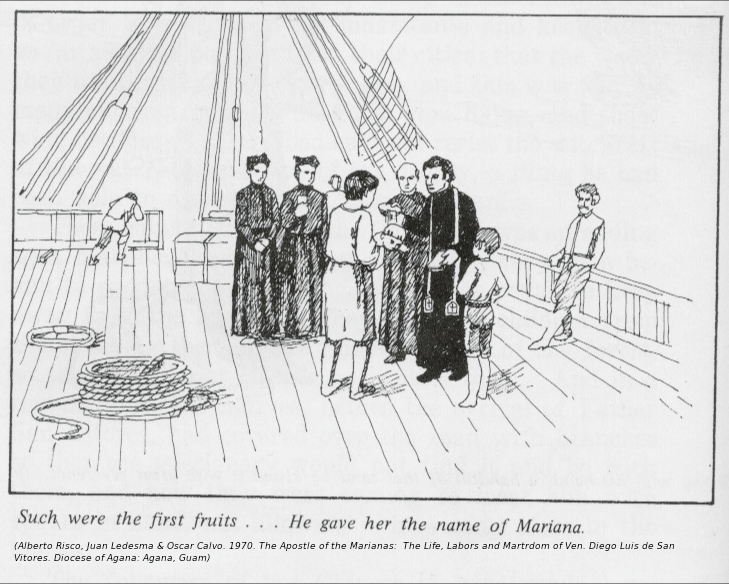
Pedro What’s His Name
Most historians seem to agree that Mariana’s father was a Filipino Christian named Pedro. However, Father Risco (1970) and those who cite his works, such as Del Valle (1941) indicate that Mariana’s father was a Spaniard named Pedro, who was a shipwrecked survivor of the galleon Concepcion.
Identifying Pedro’s last name is problematic. Perhaps the most controversial issue to resolve is whether or not Pedro is the same Filipino that was killed along with Father San Vitores by Maga’lahi Mata’pang and Hirao in 1672. You see, because the Pedro that was killed in 1672 along with Father San Vitores, is known as Pedro Calungsod (approximately 17 years old) the second Filipino in history to be declared a Saint, when the Vatican canonized him on October 21, 2012.
Spoehr (1951:48) talks about San Vitores’ group making contact with a “Pedro” who was a survivor of the Concepcion. Spoehr (1951:50) also mentions a “Pedro Calangson,” who was San Vitores’ Filipino assistant and killed, but does not indicate if Pedro and Pedro Calangson was the same person.
Rogers (1995:46) states that Marianas father was Pedro Calonsor (also may be known as Casor or Calangsor in some different accounts), who was a Christian Visayan Filipino. In addition, Rogers (1995:55) also indicates that it was Pedro Calansor that was killed along with Father San Vitores by Maga’lahi Matapang and Hirao. Mata’pang hurled a lance that pierced Pedro Calonsor and then Hirao split Pedro’s head with a cantana.
Lugar (1990) also discusses a Pedro Casor and states, “Sanvitores' band, five priests, a lay brother and thirty lay catechists, encountered two survivors of the Concepcion when they landed on Guam in the middle of June 1668, Pedro Casor, a Christian native of the Bisayan region of the Philippines who became a trusted companion of Sanvitores , and Lorenzo, a native of Malabar.” Lugar’s focus was on the Concepcion and therefore did mention the death of Father San Vitores and his assistant.
Tanya Champaco Mendiola’s (2010) writing is the first one I have come across to actually indicate that there were two different Pedro Calungsor’s: one from the 1638 Concepcion shipwreck and a younger one around seventeen years old (aka Pedro Calungsod) that came with Father San Vitores in 1668.
And finally (for now), I am currently reviewing De Viana’s 2004 book. De Viana (2004:48) contends that the Pedro from the 1638 shipwreck and father of Mariana is Pedro Jimenez. His source: Doc. No. 18 of RAH 9/2656, Official report on the life and death of Fr. Medina, letter of Fr. Sanvitores to the Provincial of the Philippines, Agana, 14 May 1671, cited as Document 1671B in HM 5:131-139. Without having reviewed this source I’m not sure what to believe. However, I have noted that in Quimby (2012) he makes an interesting statement that may further support De Viana. Quimby wrote, “Pedro Jiménez, the Concepción beachcomber who had become a favorite of several chiefs on Guam, came aboard the galleon the day after it arrived and reportedly assured the Jesuits that their request to establish a mission would be favorably received.” I will definitely need to get my hands on De Viana’s source that will help to resolve the conflicting historical information as to who may have been Mariana’s father.
[This writing as with my previous posts on Chamorro people I have written about from the 1600's to the 1800’s remains a work in progress.]
References
Francisco Garcia. 2004. The Life and Martyrdom of the Venerable Father Diego Luis de San Vitores , S.J . Translated by Margaret M. Higgins, Felicia Plaza and Juan M.H. Ledesma. Edited by James A. McDonough. MARC Monograph Series 3. Guam: University of Guam
Catherine Lugar. (1990). The History of the Manila Galleon Trade. Sutton, Vermont: Pacific Sea Resources.
Tanya M. Champaco Mendiola, ' Father Diego Luis de San Vitores', referenced March 7, 2013, © 2009 Guampedia™, URL: http://guampedia.com/father-diego-luis-de-san-vitores/
Mathers W, Parker HS, Copus K. 1990. Archaeological Report: The Recovery of the Manila Galleon Nuestra Senora De La Concepcion. Retrieved August 21, 2012 from: http://pacificsearesources.com/html/contents.html
Frank Quimby, ' The Matao Iron Trade Part 3: Appropriation and Entanglement', referenced March 27, 2013, © 2009 Guampedia™, URL: http://guampedia.com/the-matao-iron-trade-part-3-appropriation-and-entanglement/
Alberto Risco, S.J. 1970. The Apostle of the Marianas: The Life, Labors, and Martyrdom of Ven. Diego Luis de San Vitores, 1627-1672. Translated by Juan M.H. Ledesma, S.J. and edited by Msgr. Oscar L. Calvo. Hagåtña: Diocese of Agana
Robert Rogers. 1995. Destiny’s Landfall: A History of Guam. University of Hawaii: Honolulu, HI
John N. Schumacher, S.J. 2001. Blessed Pedro Calungsod, Martyr: An Historian’s Comments on His Philippine Background. Philippine Studies 49(3): 287-336.
Alexander Spoeher. 1954. Saipan – The Ethnology of a War-Devasted Island. Fieldiana: Anthropology, 41. Chicago Natural History Museum: IL
Augusto V. de Viana. 2004. In the Far Islands: the Role of Natives from the Philippines in the Conquest, Colonization and Repopulation of the Mariana Islands. University of Santo Tomas: Manila, Philippines.
Sister Maria Teresa del Valle. 1941. Tercentenary of the Evangelization of the Mariana Islands – 1668-1968.Guam Recorder, 1(1), p.23. Micronesian Area Research Center, UOG: Guam
Across the Water in Time
- Details
Please visit and support Jillette Leon-Guerrero's current genealogy research project, "Across the Water in Time."
John Paris died in Honolulu in 1928. He is buried next to his wife on the grounds of Oahu’s Kawaiaha`o Church. This Church was the first Christian Church built in Hawaii, and the church where John married his wife Pauelua in 1877. John and his wife had three sons and two daughters.
It would take over 80 years for a descendant to start looking for the origins of her great-grandfather. With no knowledge of his life beyond the Hawaiian Islands, Yolanda Paris Sugimoto reached out to a researcher on Guam to help learn about the roots of her ancestor. The ensuing research would take the two on a journey across the ocean and back in time and yield surprising results that neither could have anticipated.
Database Update 24 March 2013
- Details
The database has been updated and has grown from 287,927 to 289,917 names.
Familian Jai
- Details
Familian Jai (Yai)
I am a descendant of the Familian Jai. Historically our family has spelled the family clan name with the letter “J,” but it is pronounced with Chamorro letter “Y” as in Yona or yo'ku.
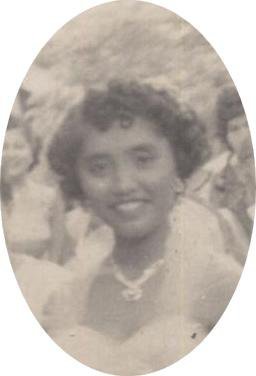 My Jai lineage comes from my mother Rosita Leon Guerrero Cruz Punzalan, whose father was Ignacio Manibusan Cruz.
My Jai lineage comes from my mother Rosita Leon Guerrero Cruz Punzalan, whose father was Ignacio Manibusan Cruz. 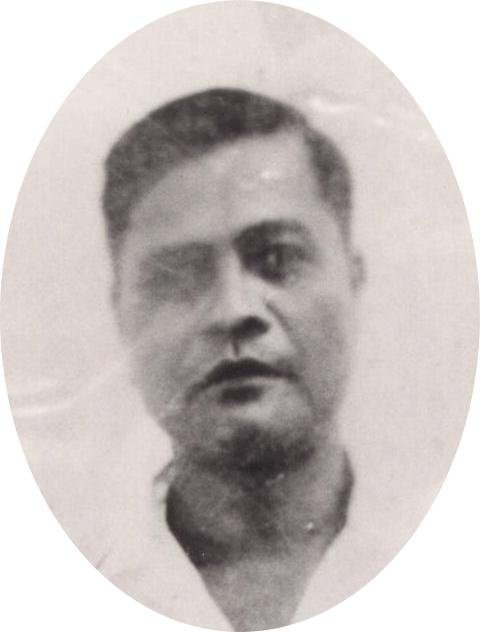 Her grandfather was Juan Ignacio de la Cruz, and great grandfather was Vicente de la Cruz.
Her grandfather was Juan Ignacio de la Cruz, and great grandfather was Vicente de la Cruz.
I do not have much information on this portion of my ancestral roots so I decided to write about what I have collected to date. Perhaps someone who reads this article will able to add information on this part of my family.
This essay is actually dedicated to my mother Rosita. She continues to be the nucleus and backbone of my family. Sen magof yu put i fuetsan Nana-hu!
Hai’ na familia? Familian Hai’?
I have no idea what Jai means or its origins on how the clan name came about and at which generation point. However, I recently came across the “Dictionary and Grammar of the Chamorro Language of the Island of Guam,” by Edward R. Von Preissig published in 1918. Von Preissig uses the letter “j” to make the sound of the letter “h.” In specific and on page 13, he discusses the interrogative adjective of:
Jayi/Jaye [Hayi] and Jai/Jae [Hai], which denotes who? For example Preissig wrote:
- jayi sija na taotao? [Hayi siha na taotao?] (What people? Literally, who people?).
- jai na rai? [Hai’ na rai?] (What king? Literally, who king?).
Throughout history there are numerous spelling variations of Chamorro words and names. So I have not completely ruled out the possibility of one spelling forever changing the pronunciation of the Jai family clan name.
Matias Yay
I have also wondered if our clan may be related to Matias Yay.
According to history[1], Matias was one of three young Chamorros identified as fervent Christians from among the nobility of the Chamorro people. They were selected to embark on the Buena Socorro for Manila from Guam on 13 June 1671. From Manila they were sent to New Spain [Mexico]. Pedro Guiran, the brother of Matias, died during the voyage. When the other two, Ignacio Osi and Matias Yay made it to Mexico they petitioned the viceroy, Archbishop of Mexico, to send them a Governor and a Garrison. The Archbishop of Mexico, embraced the Ambassadors and graciously promised that their demand should be accorded.
Alias “Yac”
In early land record archives[2] several owners were referenced with their family clan names as their alias. In one land record, Estate No. 1638, I have come across a reference to my great-great grandfather Vicente. He is referenced as “Vicente de la Cruz alias Yac,” owning a property west of Antonia de los Santos property in the barrio of Santa Cruz, Pizarro Street, Agana. It is interesting to note the transcription error from “Yae” to “Yac.”
Tatan Jai
Furthering my quest to research my family roots, some family members have conveyed to me bits and pieces of information on my great grandfather Juan Ignacio de la Cruz, who was affectionately known as Tatan Jai. Family members recall him being a very strict man and arduous farmer. He subsequently died of his wounds after being gored by one of his bulls. I do not know much else about him but have come across some land documents. Over the years of researching Chamorro genealogy and census records I have observed a pattern for some families to maintain two residences: one was actually the main dwelling, the other was the ranch for farming.
According to some land records[3] I reviewed, Tatan Jai built a house around 1880, known as Estate 746 on Legaspi Street, Agana, which was officially recorded on June 14, 1900. To the east of this house was the residence of Vicente Mesa, on the west was Juan Duenas, and to the north was Vicente de Leon Guerrero.
Other land records I have come across on Tatan Jai, which I believe to be in the Palai, Piti area:
- Estate No. 745, six hectares of coconut land located in Oyso-Dasculo. Bordering the property to the south is a mountain, and on the west is a road which leads to Agat. To the north of the property is an estate owned by Antonio Mendiola and to the east is Vicente de la Cruz (I am not certain if this was Tatan Jai’s father or if he was another Vicente). Tatan Jai acquired this property in 1897 by mere occupation (a common practice back in the day) and was officially granted title June 14, 1900.
- Estate No. 1589, approximately 49 ares and 45 centares of land with irrigation in Mafulot, purchased from Jose Ignacio in January 1902. To the north and south of the property is a river; to the east is rice land of Leonicio Ignacio, and on the west side is the estate of Joaquin Ignacio.
- Estate No. 1590, approximately 20 ares of coconut land in Mafulot also purchased in January 1902 from Jose Ignacio. To the north of the property was a “Sabana;” the east was Leonicio Ignacio’s estate; toward the west was Joaquin Ignacio’s estate; and, to the south was an unnamed river.
I would like very much to hear from anyone who may have additional information to contribute. I also welcome any information that may need to be corrected.
Chamorro Roots, always a work in progress…
Maga’lahi Taga and His Apparition
- Details
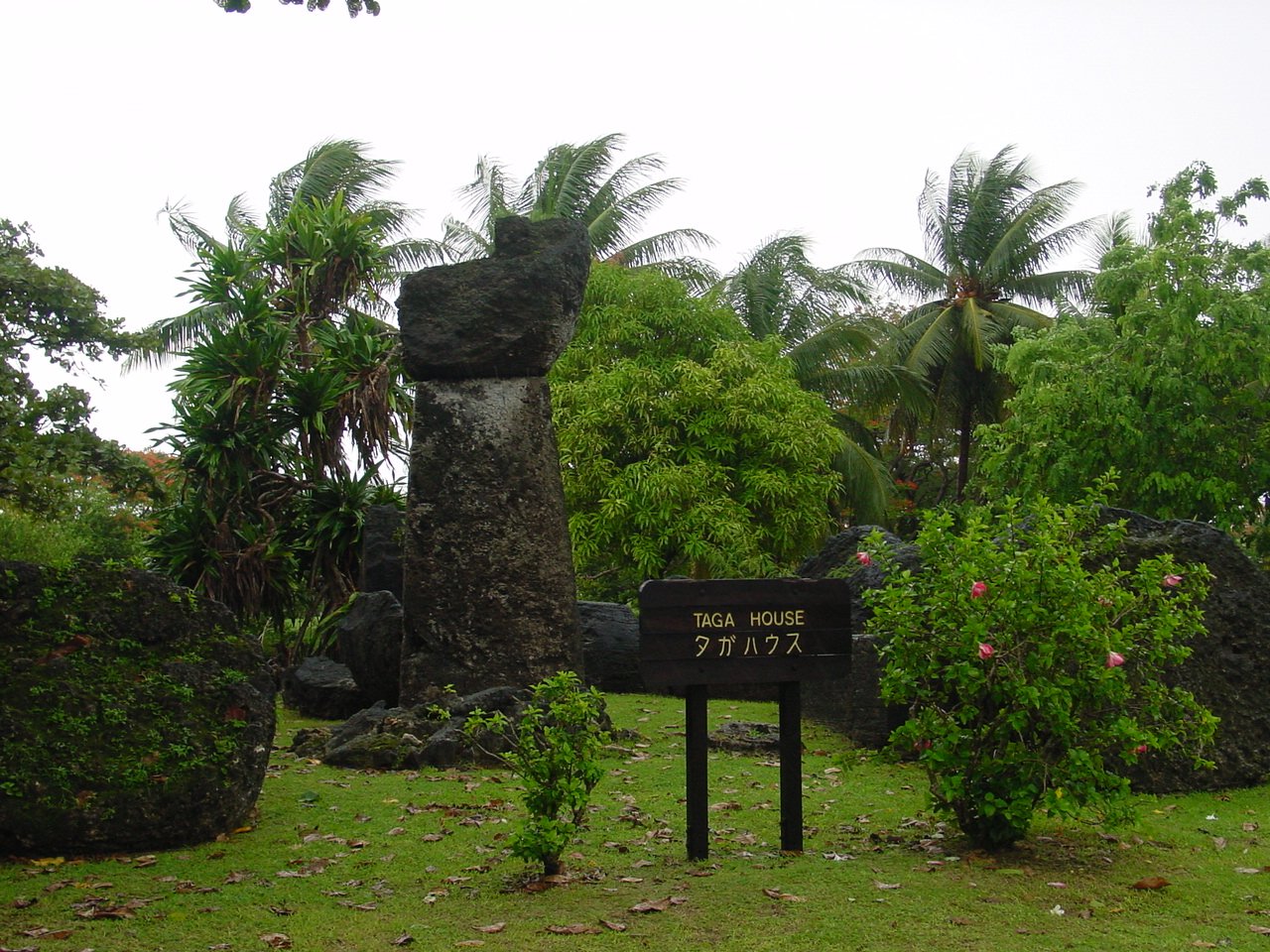
Quite often when people hear the historical name of Taga, many might likely associate this chief's name with the House of Taga in Tinian; a place where the biggest latte stone pillars throughout the Mariana Islands are located. GuamPedia (https://www.guampedia.com/taga/) seems to have some descriptions of the House of Taga, which includes some folklore; therefore, I will not elaborate that here.
But what do some of our history and scholarly writings say about Maga'låhi Taga? Well...like other parts of Chamorro history not everything seems clear and some information is not consistent. However, it seems that part of folklore and bits of history seem to indicate that Taga was at one time from and the village Chief of Sunharon, Rota. He then later moved and became the village Chief of Chelu, Tinian (sometimes spelled Chiro or Chelo in historical manuscripts).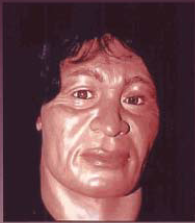
Taga was recorded by the Jesuits to have had an apparition. Taga's alleged apparition consisted of a vision of the Blessed Virgin Mary guiding him to save the passengers and crews of any shipwrecked Spanish galleon. Therefore it was further written that Taga was responsible for saving and assisting the survivors of the Nuestra Senora de Concepcion Spanish galleon that was shipwrecked off the coast of Saipan September 20, 1638.
Sometime after the shipwreck Taga was baptized by Marcos Fernandez, one of the shipwreck survivors, who gave Taga the family name of Corcuera. Taga's fully baptized name was Sebastian Hurtado de la Cocuera in honor of then Governor of the Philippines.
Taga, also as a result of his apparition, sent his brother with other Spaniards (from the Concepcion shipwreck) to the Philippines so that he may bring back someone to preach the gospel.
Notes:
1. De Viana (2005) addresses Taga as Chief Jose Taga.
2. House of Taga photo from Wikipedia
3. Taotao Taga photo from Heathcote 2006
References:
Lawrence Cunningham. 1992. Ancient Chamorro Society. Honolulu, Hawaii: Best Press
Francisco Garcia. 2004. The Life and Martyrdom of the Venerable Father Diego Luis de San Vitores , S.J . Translated by Margaret M. Higgins, Felicia Plaza and Juan M.H. Ledesma. Edited by James A. McDonough. MARC Monograph Series 3. Guam: University of Guam
Gary M. Heathcote. 2006. Taotao Tagga’: Glimpses of His Life History Recorded in His Skeleton. Guam: University of Guam
Catherine Lugar. (undated). The History of the Manila Galleon Trade. Pacific Sea Resources.
Carlos Madrid, ' Galleon: Concepción', referenced March 5, 2013, © 2009 Guampedia™, URL: http://guampedia.com/galleon-concepcion/
Alberto Risco, Juan Ledesma & Oscar Calvo. 1970. The Apostle of the Marianas: The Life, Labors and Martrdom of Ven. Diego Luis de San Vitores. Diocese of Agana: Agana, Guam
Augusto V. de Viana. 2005. Pampangos in the Mariana Mission 1668-1684. Micronesian Journal of the Humanities and Social Sciences, 4(1).
Page 70 of 84


